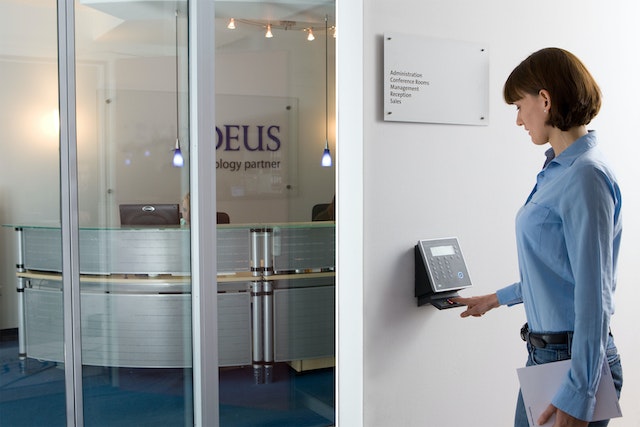Biometric data security has become a popular choice for many businesses, as it provides a secure way to store and protect sensitive information. But just how secure is biometric data? In this article, we’ll take a look at the security of biometric data and what you can do to improve it, to help you decide if it’s the right choice for your business. Biometrics allows individuals to be identified and authenticated based on recognizable and verifiable data that is unique and specific. Fingerprint mapping, facial recognition, retina scans are all forms of biometric technology that are widely used today. Biometrics can reduce security risks but they’re not impenetrable; there are some common-sense measures you can make to help protect your biometric data from being compromised. Strong passwords mean that it’s harder for hackers or malicious actors to gain access to your accounts; storing biometric data on a server like you would with a password means that only authorized personnel have access; using two-factor authentication adds an extra layer of protection by requiring users to provide additional information before they can log in; finally, regularly updating software helps ensure any vulnerabilities in the system are patched up quickly. By taking these steps, businesses can ensure their biometric data remains safe and secure.
How Secure Is Biometric Data?
Biometric data is generally considered to be more secure than traditional methods of authentication, such as passwords or pins. This is because biometric data is unique to each individual, making it more difficult to replicate or forge. Biometrics allows a person to be identified and authenticated based on recognizable and verifiable data that is unique and specific to each individual. Additionally, biometric data cannot be easily changed, so it provides a more reliable form of authentication than single-factor authentication (SFA), in which the user provides only one factor (usually a password).
Biometric security captures and analyzes biometric data to authenticate an individual’s identity. It offers a higher level of security than SFA due its accuracy and robustness. However, biometric data is not impervious to security risks. For example, if a malicious actor is able to gain access to the biometric data, it can be used for unauthorized access into secure systems or accounts. Additionally, biometrics can also be stolen or leaked which makes them vulnerable as well.
The pros and cons of using biometrics for authentication must also be taken into consideration when deciding whether this type of technology should be used for securing critical accounts. On one hand, up until recently they were considered an impregnable means of passwordless identification; however on the other hand they are vulnerable if stolen or leaked as mentioned before. Ultimately though it comes down personal preference when deciding how secure you want your accounts – whether you choose traditional methods such as passwords/pins or opt for something more advanced like biometrics – both have their advantages and disadvantages that must weighed up before making any decisions about account security measures.
What Can You Do to Improve Biometric Data Security?
Multi-factor authentication (MFA) is an important tool for improving biometric data security. MFA combines two or more authentication methods, such as biometric data, passwords, pins, or security questions and answers. This provides an additional layer of security by requiring multiple pieces of information to gain access to a system or account. To ensure the effectiveness of MFA systems, it is important to store biometric data in a secure database and encrypt it. Access should be limited to authorized personnel only and protocols should be regularly updated. The main benefit of MFA is that it enhances the security of organizations by requiring users to identify themselves with more than just a username and password. Additionally, having an MFA system with biometrics can help eliminate fraud and make going passwordless possible. By implementing these measures, organizations can improve their biometric data security significantly.
Conclusion
Biometric authentication is a powerful tool for securely storing and protecting sensitive information. It is more secure than traditional methods of authentication, such as passwords, due to its high level of accuracy. To ensure the security of biometric data, it is important to use multi-factor authentication and keep biometric data secure by storing it in a secure database and regularly updating the security protocols used to protect it. Biometrics can be used in ID systems as part of the registration process and to provide people with proof of identity. Biometric security captures and analyzes biometric data for access control and identity authentication. It compares a person’s characteristics to a stored set of biometric data in order to grant access or verify identity. While biometrics are generally more secure than other forms of authentication, they are not foolproof; hackers can spoof biometric data by using various techniques like downloading or printing images or videos that contain facial recognition information.




Be First to Comment